In December 2022, North America's first Type IV-C building topped out. Heartwood, an eight-story multi-residential building in Seattle’s Capitol Hill neighborhood, utilizes cross-laminated timber (CLT) floor panels and a glulam post and beam system.
Traditionally, most multi-family projects would be capped at five stories of light-framed wood or require all concrete to go taller, the new allowance of tall mass timber creates another option – one that yields cost savings and other benefits.
While there’s been a boom of interest in using mass timber in place of light-framed wood through the last five to 10 years, the adoption of the tall mass timber into the building code now allows mass timber to compete directly with high-rise concrete and steel – and it’s proving to be a heavy contender.
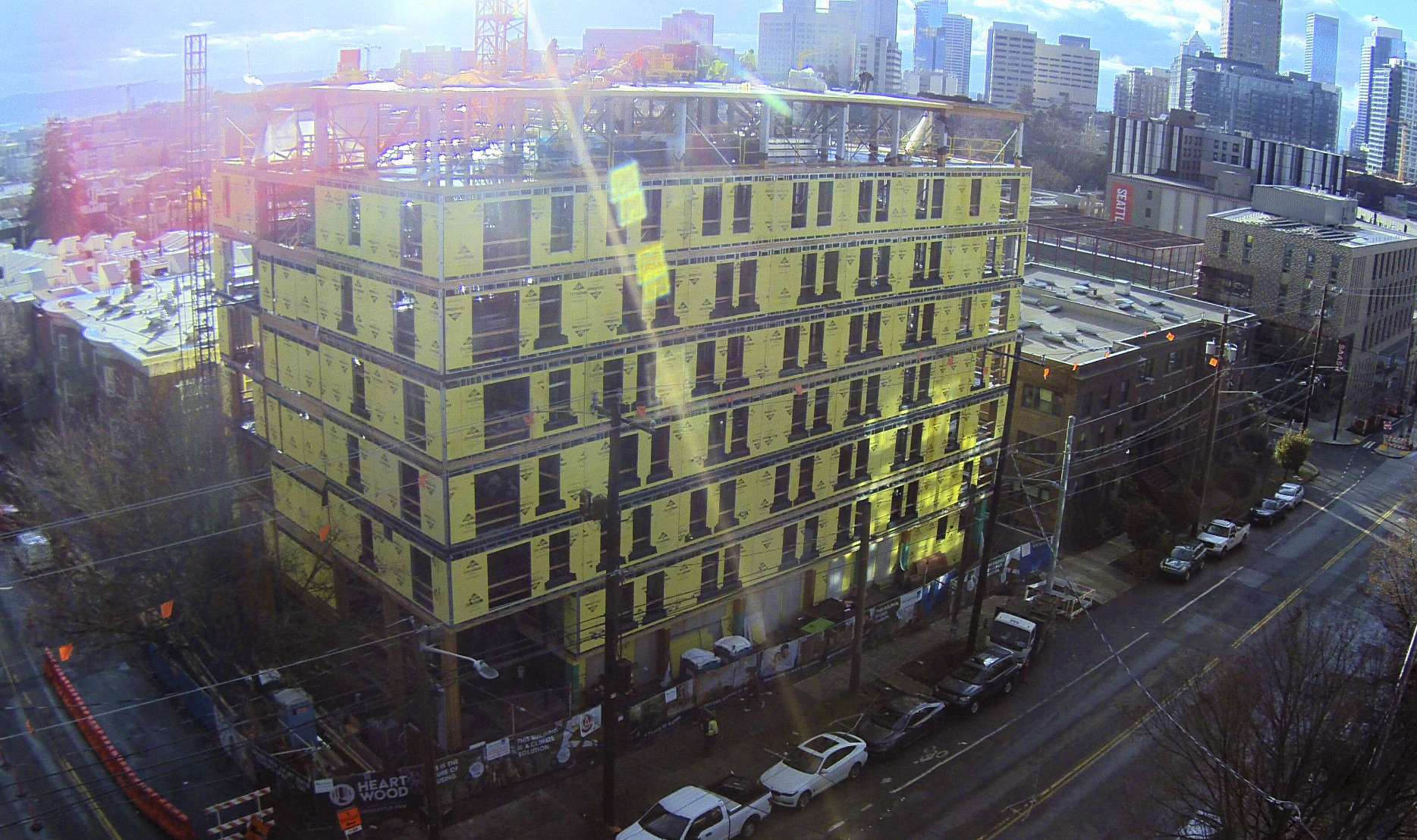
What is Tall Mass Timber?
The new 2021 IBC prescriptive code, which was early adopted in many states, allows for mass timber structures up to eight, 12- and 18-stories in height. While Heartwood is the first Type IV-C building in construction in the U.S., just down the coast in Oakland, California, DCI is also under construction on the nation’s first Type IV-A structure, called 1510 Webster.
Rising from its foundations, 1510 Webster will be the tallest mass timber building in California at 18 stories and tallest mass timber building in the world in a high seismic zone. It is also the first Type IV-A tall mass timber building in North America and the first high-rise in the world to utilize a point-supported mass timber system with mass plywood panels (MPP).
The unique system required custom laboratory testing led by DCI Engineers, which exceeded performance expectations.
“MPP is classified as a CLT product, but we discovered it does not exhibit rolling shear behavior like most CLT products,” said Adam Jongeward, DCI Associate Principal. “It can carry way more load than what the code says, so we shrunk a six-inch panel to five at every floor, which saved one sixth of the wood on this project.”
“That reduced cost is partially the result of being able to utilize thinner sections, but also because MPP is just plain cheaper on a per cubic foot basis,” adds DCI CEO Jeff Brink, Principal on the 1510 Webster project.
This discovery process is not uncommon with mass timber projects. DCI’s engineers have spent the last couple decades understanding, fine tuning and implementing mass timber into a variety of projects. That process has also required convincing regional jurisdictions of its performance capabilities, particularly when it comes to fire design proofing.
“The biggest challenge for tall mass timber is the two-hour fire rating,” said Ethan Martin, DCI’s Director of Sustainability & Mass Timber, noting the baseline for six-story structures and below was just one hour. Because the new code lacks standardization, engineers have to get creative about fire design of their structures.
For Heartwood, DCI partnered with atelierjones (architect), Timberlab (timber specialist) and Hilti (fire stopping manufacturer) to develop a mortise tenon beam connection that meets the modern two-hour fire rating. Not only did they convince building officials this all-wood connection would perform to standards, but the CNC machine-produced connection proved to be so effective and cost efficient that it’s now being used on three other DCI tall mass timber projects.
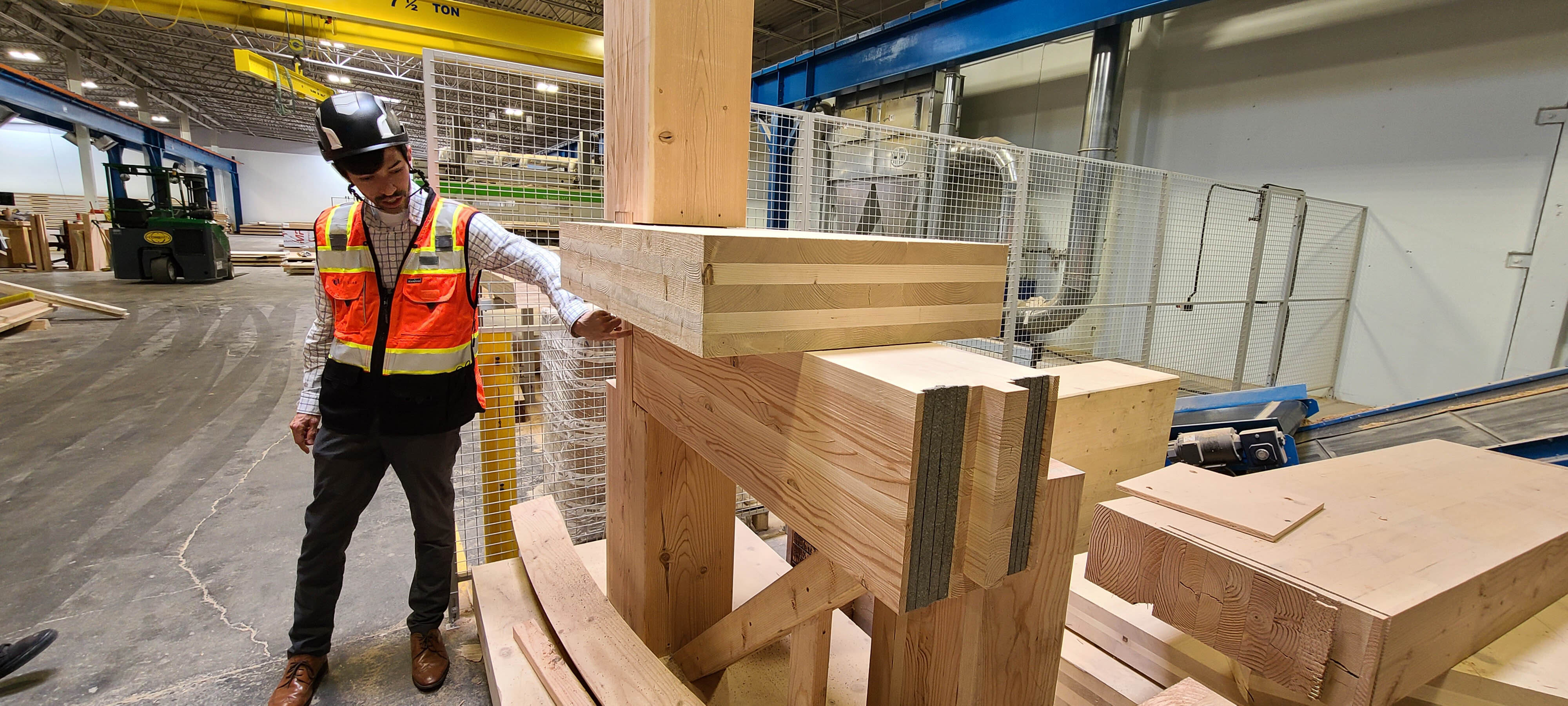
Why Tall Mass Timber?
The reasons a developer may choose to go mass timber in a high-rise is the same for any other building – it depends.
Some drivers include aesthetics of the exposed wood, the speed of construction, or an ability to capture more leasable space. For Heartwood, light-framed construction didn’t provide enough units (which is limited to five stories) and an all-concrete structure was just too expensive. Mass timber was the only way to make the pro-forma pencil for this workforce housing project. Jason McLin from Community Roots Housing explains this more in-depth in a great video.
“We are essentially getting more square footage in a lower price per square foot,” Adam said. “Then the goal is to make all those connections fast and easy to install for quicker project delivery – and the quicker you do that, the quicker you realize your ROI.”
Benefits aside, mass timber also provides something just as valuable – more options.
“Tall mass timber provides a third data point for building options,” said Ethan. “It’s no longer just concrete and steel as your high-rise choices.”
Now that it’s part of the high-rise club, mass timber also provides an opportunity to explore hybrid systems, as was the case on Heartwood where the lateral system consists of steel buckling restrained braces – a simple, prescriptive product that meets modern day seismic requirements.
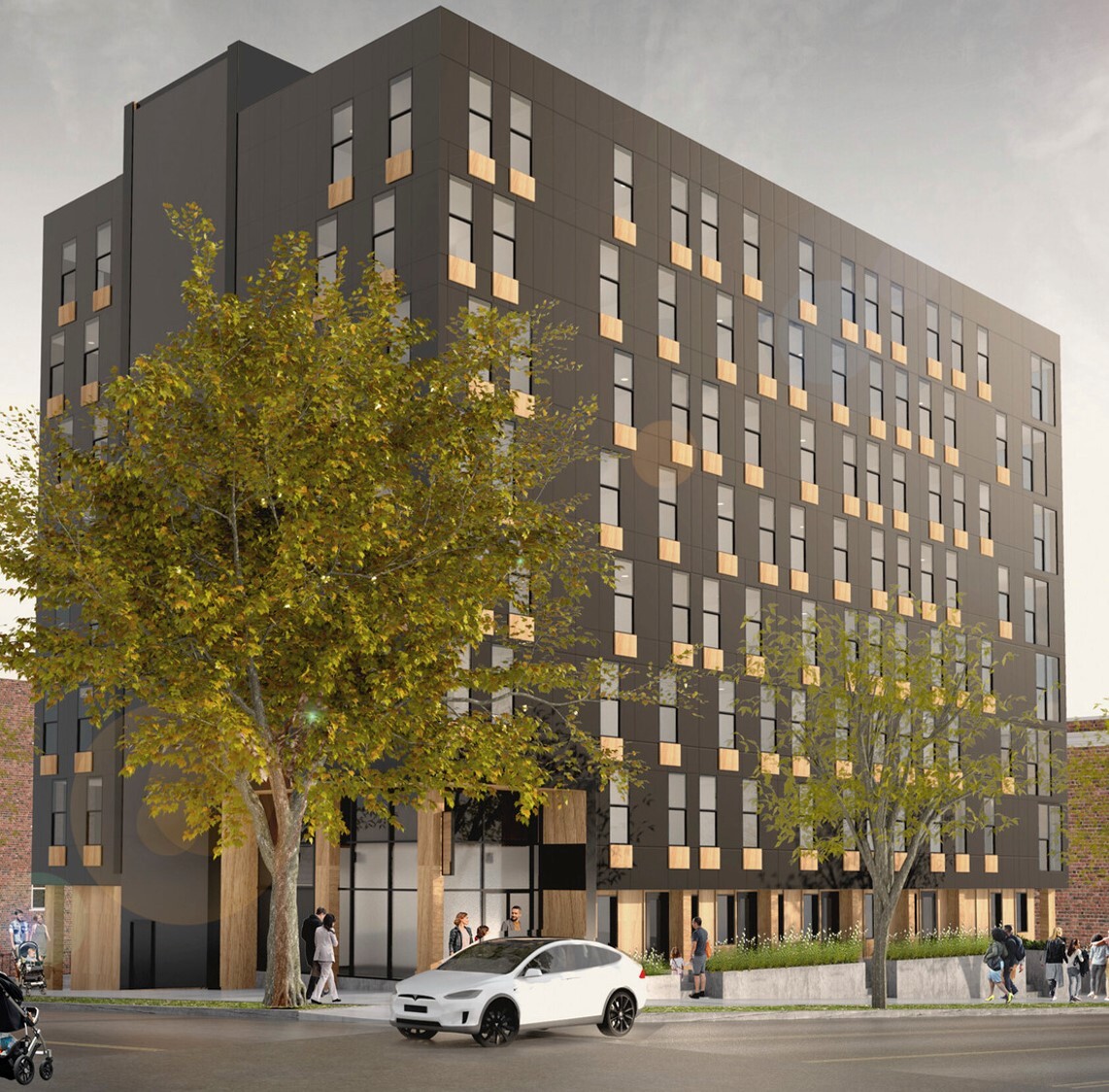
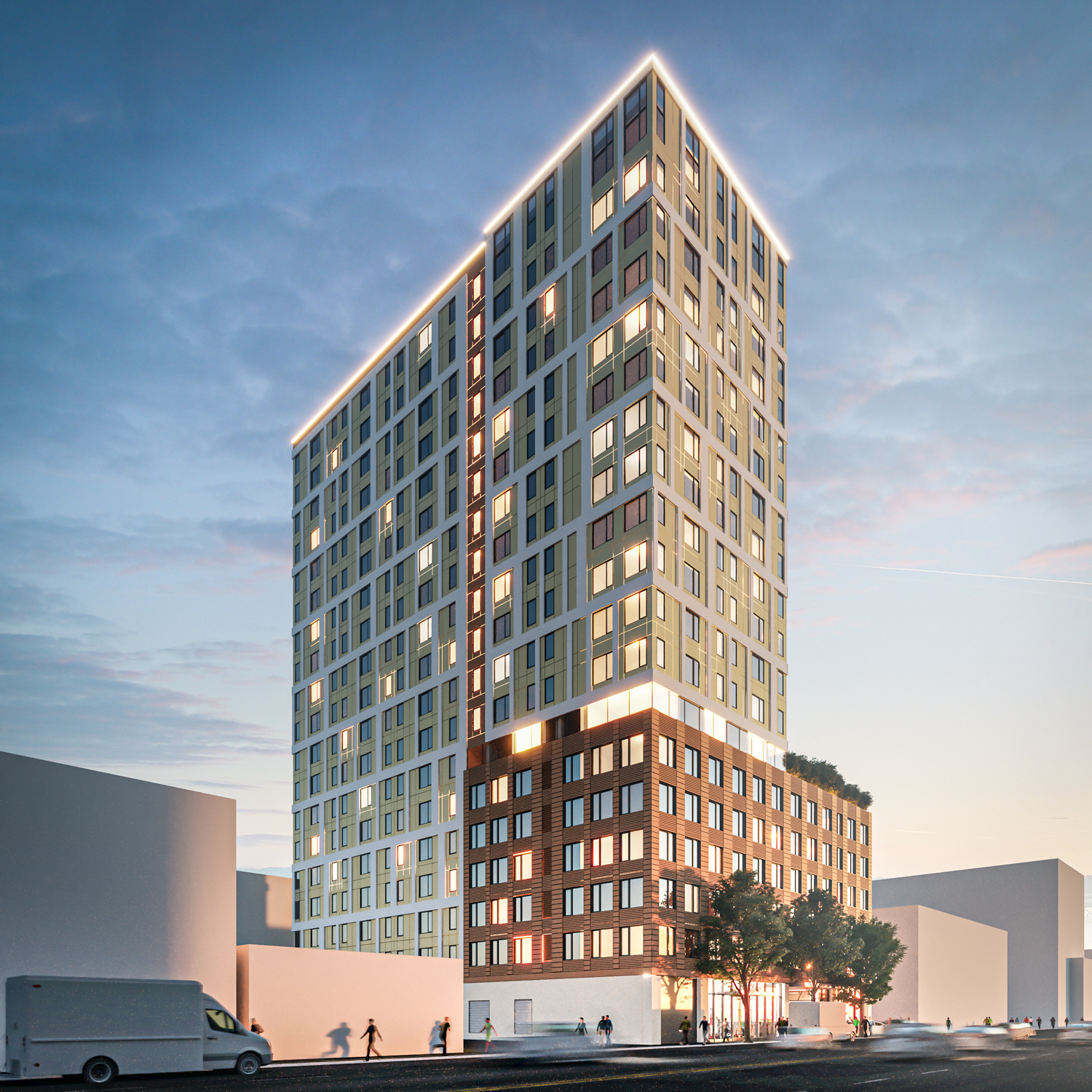
How to Get Tall Mass Timber
Innovative systems require an increased level of coordination and collaboration within a design team. No longer hidden by walls or ceilings, every panel, beam, column and connection is not only the structural element, but also provides the architectural aesthetic of the space. Framing layouts need to account for mechanical systems without deterring from that aesthetic. We touched on this wholistic design approach in a recent blog post.
Codes are also evolving quickly, for instance IBC 2024 language has been approved, allowing Type IV-B to be fully exposed, which DCI is already utilizing to benefit owners. And although project teams can stick to the prescriptive allowances of eight, 12 and 18 stories, there are reasons for going even taller – which will require a Performance Based Fire Design. And for that reason, project teams need an engineer who understands the performance capabilities of mass timber and be able to translate that to building officials.
With the country’s first Type IV-C and IV-A structures in construction, and several Type IV-B in permitting, DCI is well positioned to provide that resource.
For more information on DCI’s mass timber services, contact Ethan Martin, Director of Sustainability & Mass Timber at emartin@dci-engineers.com.
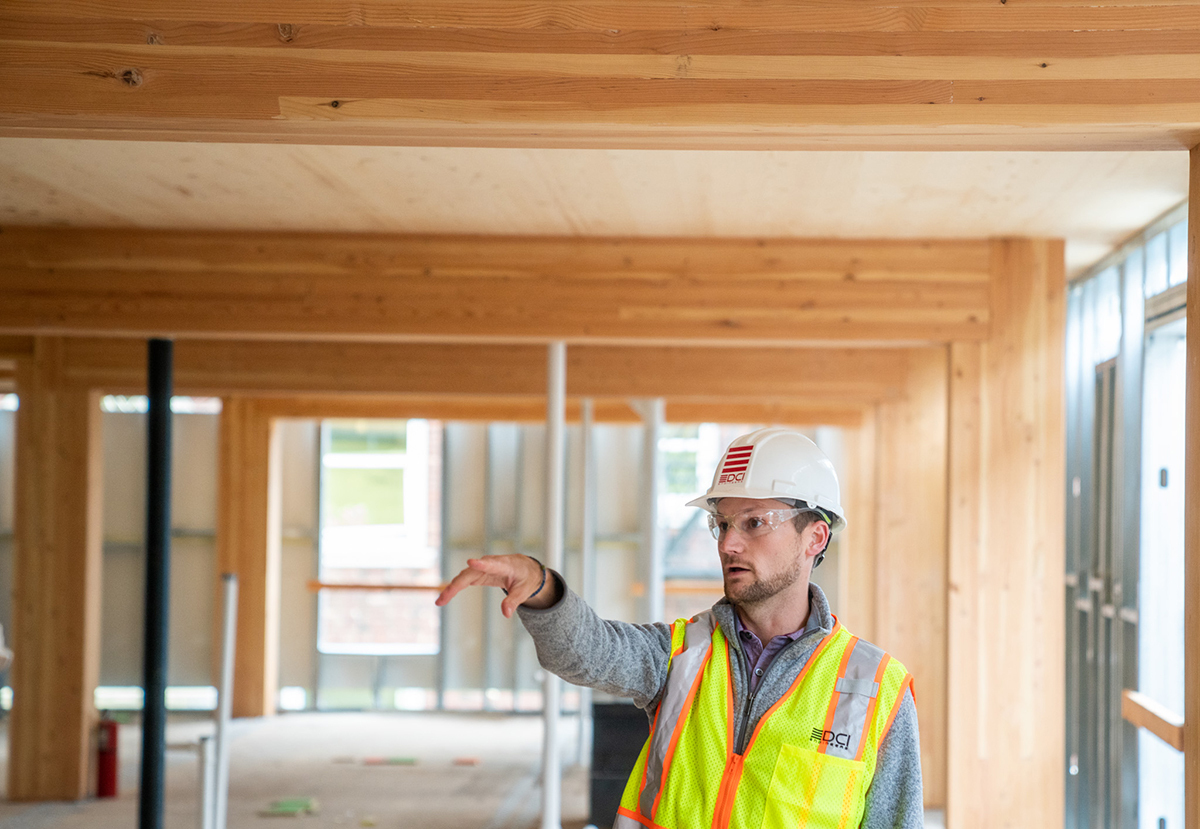
Erin Spaulding, Associate, Communications Manager | Erin comes from a journalism background with an emphasis in feature writing. She enjoys capturing the unique details of a story and is a firm believer that every person (and every project, for that matter) has a story to tell. Erin loves running, fly fishing and learning about unique spaces. Back in Michigan, she owns a little studio condo that's been readapted from an asylum and turned into a mixed-use residential building.